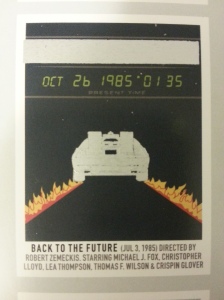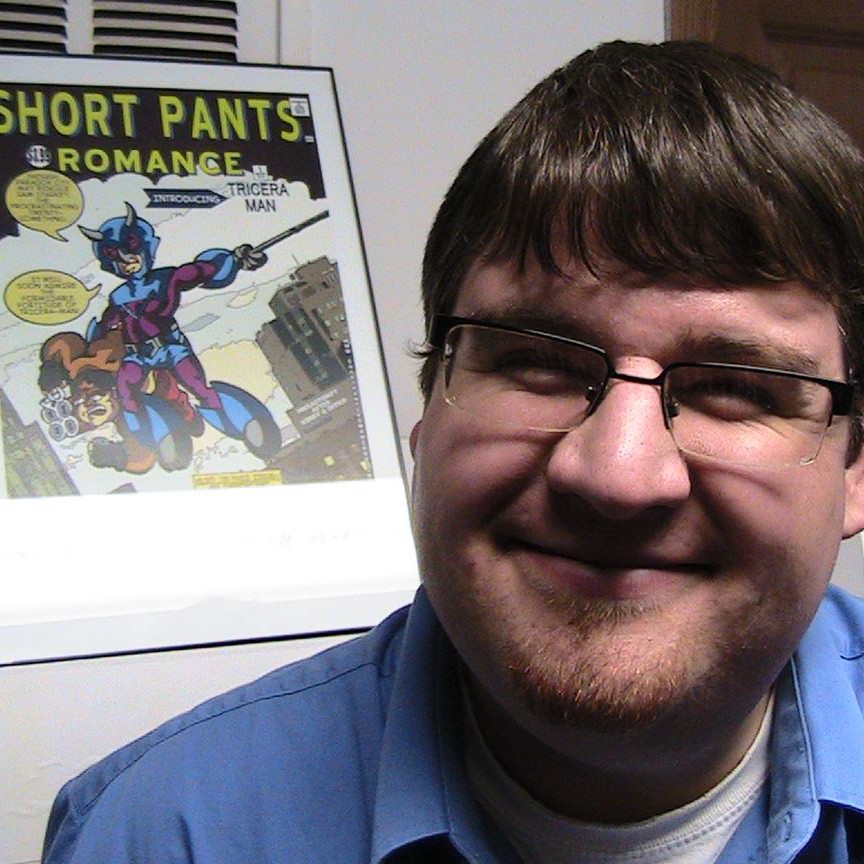I’ve set a goal for 2018 to make my way through the movies represented on the Pop Chart Lab 100 Essential Films Scratch-Off Chart. Learn what 100 movies they consider “essential,” follow my progress here in detail and listen to my reactions on Ka-Pow the Pop Cultured Podcast!
APRIL
Looking over my poster, it feels like I’ve made a sizable dent in the films I’ve already managed to watch this year. But there are so many more to go, the enormity of this task is beginning to worry me for the first time. Math is still on my side, though, and 2018 is only a third over, meaning this batch keeps me precisely on pace, bumping my total up to 34 by adding seven new movies to the list. Find out what they were and some of my opinions on these classics right here!

Forrest Gump
Year: 1994
Director: Robert Zemeckis
Method: Freeform channel
Times Viewed: ~5
Criticizing this uplifting film about a slow-witted kid navigating the twentieth century feels like insulting a puppy who managed to charm its way to six Oscars. But it plays everything so safe, so sanitized and so conservative. I thought perhaps there would be more obscure historical moments I would recognize, watching it as a better educated adult than I did in the 90s, but every reference point is glaringly obvious, just like every song on the soundtrack is the most recognizable choice to represent a time period. The movie isn’t bad by any stretch, and definitely tugs at the heart. The performances from Robin Wright, Gary Sinise and Sally Field are all wonderful, even if something about Tom Hanks’ stilted drawl feels a tad cringe-y to me now. Or maybe I just still have a chip on my shoulder over “Pulp Fiction” being robbed of Best Picture that year.


Sunset Boulevard
Year: 1950
Director: Billy Wilder
Method: TCM
Times Viewed: 1
Delivering two of the most recognizable lines in the history of cinema, “I am big, it’s the pictures that got small” and “all right, Mr. DeMille, I’m ready for my close-up,” Gloria Swanson’s portrayal of forgotten silent-film star Norma Desmond is as iconic as it gets in this Hollywood noir. The performance has zero subtlety in it, with Swanson arching her eyebrows, baring her teeth and flailing her arms like a tyrannosaurus to punctuate every overdramatic word she says. Grounding the story a bit is William Holden’s character, a failed screenwriter who feeds Norma’s delusions and reaps the material rewards. He is pessimistic and bitter, and it was pretty stunning to see a movie this old so effectively destroying the illusions of the film industry and stardom. It pulls no punches about show business, and how ruthlessly people are discarded, especially young women with stars in their eyes.


Braveheart
Year: 1995
Director: Mel Gibson
Method: Own DVD
Times Viewed: >25
For a segment of my teen years I would have listed “Braveheart,” the tall tale of William Wallace and his fight for Scottish independence against England in the 13th century, as my favorite movie of all time. I’d get home from school, hit play on the VCR and watch a section, picking up wherever I left off. Then a lot of years passed, during which Mel Gibson did some gross things, so I was worried what my feelings would be this time around. And I still can’t help but love this film. The characters are easy to root for, the action is unrelenting, there’s humor and romance, betrayal and sacrifice. It’s everything you want in an epic war story, plus kilts. I also counted a dozen lines of dialogue I continue to pepper into everyday conversation, so there’s no doubt this one is helplessly lodged in my subconscious forever.


Back to the Future
Year: 1985
Director: Robert Zemeckis
Method: HBO free weekend
Times Viewed: >25
There probably isn’t any such thing as a perfect movie. I can find flaws in even the most beloved classics. (Look back over these lists for proof.) But Robert Zemeckis’ tale of a time traveling teen is one of the closest. The script is a clinic on screenwriting. Every piece matters and folds back around to be important later. And the cast, led by Michael J. Fox and Christopher Lloyd, sell the far-out situation with hidden vulnerabilities and amazing chemistry. It doesn’t paint 1955 with too nostalgic of a brush, presenting teenagers as flawed and confused no matter the era. Watching it this time around I was struck by how innocent it all is, debuting during an era when movies starring high schoolers were mostly raunchy R-rated affairs. That goodness at its heart is surely a big part of its timelessness.


Bonnie and Clyde
Year: 1967
Director: Arthur Penn
Method: TCM
Times Viewed: 2
It’s a bit odd that one of the defining films that helped usher in the auteur filmmaking of “New Hollywood” is a Depression-era period piece. But the story of real life outlaws Clyde Barrow and Bonnie Parker is full of the kind of things a young generation creating the counterculture in the late sixties could rally behind. Warren Beatty and Faye Dunaway are like the poster children for disaffected youth, gorgeous and glamorous, with an anti-authoritarian streak, open about sex and sharing a sense of restlessness and moral ambiguity. As their relationship escalates, so too do their crimes, from small-time bank robbery to murder. But the tone remains light throughout, and the pair retain a sense of naiveté about them until the bitter end and one of the bloodiest climaxes to a movie ever seen up to that point, breaking yet another taboo about realistic screen violence.


The Silence of the Lambs
Year: 1991
Director: Jonathan Demme
Method: HBO free weekend
Times Viewed: 2
I didn’t like this movie at all when I first saw it, thinking it was a by-the-numbers serial killer flick where too much rides on improbable coincidences instead of police work, elevated only by the two mesmerizing, top-of-their-game performances from Anthony Hopkins and Jodie Foster, as the caged Dr. Hannibal Lecter and Clarice Starling, the FBI trainee seeking his advice on a case. And my opinion didn’t really change this time around. I realize it’s probably me, since everyone else on the planet adores the film and it swept the top five Oscar categories as the first and only Best Picture winner you could rightfully categorize as a horror movie. But surely it’s okay to admit this is way more of a crowd-pleasing pulpy crime thriller than an award-caliber prestige drama? (Remember, it stars a character named Hannibal who is a cannibal.)


Mr. Smith Goes to Washington
Year: 1939
Director: Frank Capra
Method: TCM
Times Viewed: 2
James Stewart plays a newly appointed Senator who uncovers corruption in this black and white Frank Capra classic. All I remembered about this movie was the iconic filibuster scene that ends it, but there is much more here to enjoy. Stewart, in a star-making role, is perfectly cast as the wide-eyed innocent Scoutmaster who still believes in America’s ideals. And Jean Arthur, as his sarcastic, cynical secretary, Saunders, provides a counterpoint to his optimism and romantic sparks as the girl you know he should end up with. It’s hard to believe the film was controversial in its day, worrying censors, critics and especially politicians it was unpatriotic for daring to suggest elected officials could be crooked. Though it wraps up a little too neatly, Saunders teaching Smith the ropes is exhilarating to watch and the media’s role in framing a debate remains a contentious aspect of politics.

Progress: 34 / 100

